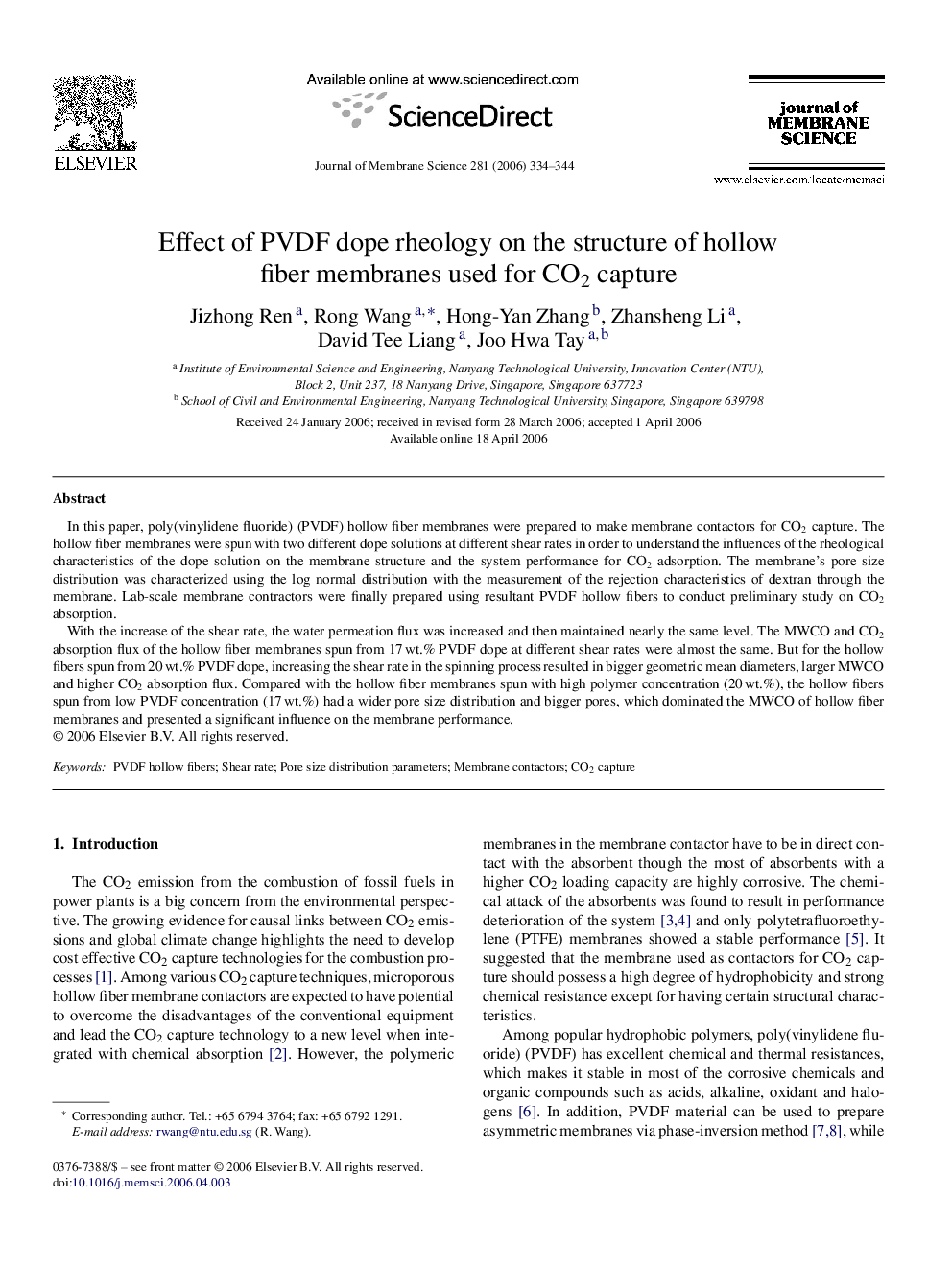| Article ID | Journal | Published Year | Pages | File Type |
|---|---|---|---|---|
| 639284 | Journal of Membrane Science | 2006 | 11 Pages |
In this paper, poly(vinylidene fluoride) (PVDF) hollow fiber membranes were prepared to make membrane contactors for CO2 capture. The hollow fiber membranes were spun with two different dope solutions at different shear rates in order to understand the influences of the rheological characteristics of the dope solution on the membrane structure and the system performance for CO2 adsorption. The membrane's pore size distribution was characterized using the log normal distribution with the measurement of the rejection characteristics of dextran through the membrane. Lab-scale membrane contractors were finally prepared using resultant PVDF hollow fibers to conduct preliminary study on CO2 absorption.With the increase of the shear rate, the water permeation flux was increased and then maintained nearly the same level. The MWCO and CO2 absorption flux of the hollow fiber membranes spun from 17 wt.% PVDF dope at different shear rates were almost the same. But for the hollow fibers spun from 20 wt.% PVDF dope, increasing the shear rate in the spinning process resulted in bigger geometric mean diameters, larger MWCO and higher CO2 absorption flux. Compared with the hollow fiber membranes spun with high polymer concentration (20 wt.%), the hollow fibers spun from low PVDF concentration (17 wt.%) had a wider pore size distribution and bigger pores, which dominated the MWCO of hollow fiber membranes and presented a significant influence on the membrane performance.
